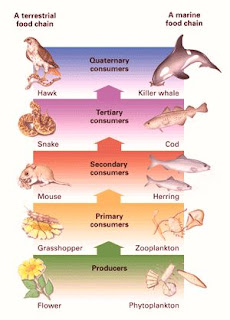Gist on Excretory System
(Short Q & A) |
| A Pair Of Kidneys (image credits: openclipart) |
Q1: Define Excretion.
Answer: Excretion is a biological process by which an organism gets rid of metabolic toxic wastes from its body.
Q2: List the toxic wastes of metabolism.
Answer: These wastes are nitrogenous materials i.e. ammonia, urea and uric acid, carbon dioxide, inorganic salts, excess of water.
Q3: What is Osmoregulation?
Answer: It is a process that maintains the amount of water and ionic balance in the body.
Q4: Where Urea is formed in mammals?
Answer: Urea is made in the liver via the ornithine cycle by combining the ammonia
made by deamination with carbon dioxide made from respiration
Q5: What are the major excretory products of plants?















